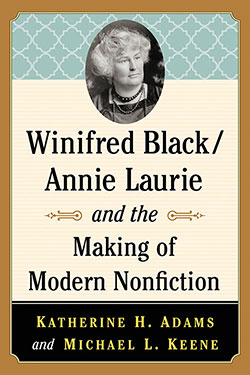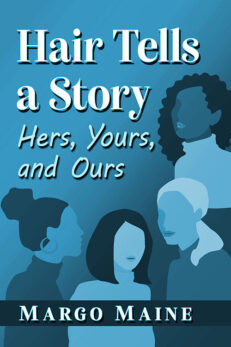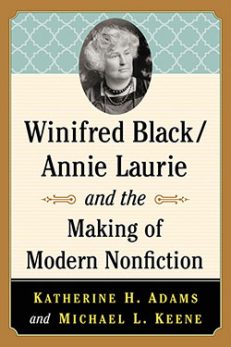Winifred Black/Annie Laurie and the Making of Modern Nonfiction
$39.95
In stock
About the Book
Winifred Black worked in journalism from 1888 to 1936, often writing under the pseudonym Annie Laurie. Her work appeared in the Hearst papers—especially the San Francisco Examiner—and in fifty additional newspapers weekly through syndication. Black wrote 10,000 short pieces, as well as three books, a nonfiction oeuvre that combined quasi-autobiographical details with characters and scenes to provide cultural analysis for a nationwide audience. She wrote about the realities facing modern women—their work, their marriages and divorces, the violence they endured, their need for independence.
Contemporary praise for Black named her “the world’s most famous feature writer” and “one of the world’s most successful reporters,” while her critics affixed the pejorative labels “stunt girl” and “sob sister.” This study covers her influential career and gives the first serious attention to her journalism and nonfiction.
About the Author(s)
Bibliographic Details
Katherine H. Adams and Michael L. Keene
Format: softcover (6 x 9)
Pages: 216
Bibliographic Info: notes, bibliography, index
Copyright Date: 2015
pISBN: 978-1-4766-6296-1
eISBN: 978-1-4766-2266-8
Imprint: McFarland
Table of Contents
Table of Contents
Acknowledgments vi
Introduction 1
1. The War Hero/The War Criminal: Winifred Black’s Father 9
2. Ada Sweet—Role Model 13
3. The Power of Black’s Personal History in Building a Journalism Career 20
4. Initiating a Career in Nonfiction: What a “Stunt Girl” Could Do 29
5. Building a Reputation Among Newspaper Kings 39
6. Black’s View of the Writing World That She Entered 50
7. A Complex Persona 65
8. An Array of Nonfiction Techniques 73
9. Black’s Subject Matter: The Changing Definition of “Normal” 92
10. Gender Distinctions 99
11. Prejudice Against the Other: Concerning Race, Sexual Preference and the Women Who Aren’t Like Us 107
12. Independence and Dependence/Parents and Children 117
13. Working Women 121
14. The Power of Beauty 132
15. Dating, Domestic Violence and Marriage 144
16. Feminism and Suffrage: Women as Citizens 162
Conclusion: In Short 173
Chapter Notes 175
Bibliography 191
Index 207





